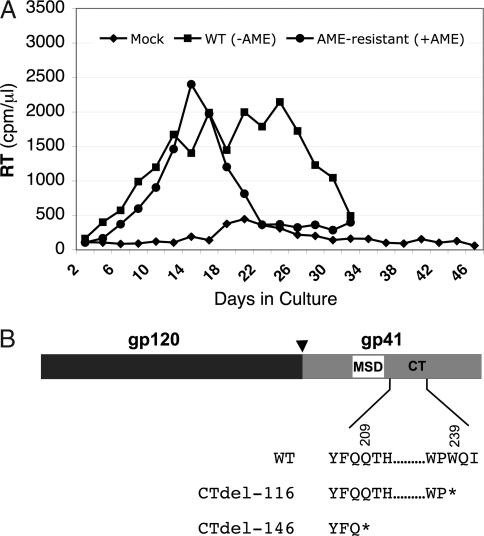Fig. 4.
AME-resistant SIVmac239 acquires stop codons in the gp41 CT coding region. (A) Selection for AME-resistant virus. CEMx174 cells were infected with virus stocks derived from the SIVmac239 molecular clone and were cultured in the absence or presence of 10 μM AME. Cells were split every 2 or 3 days, and RT activity was monitored at each time point. In the first passage, virus replication peaked on day 44 in the presence of AME (data not shown). The virus that had been cultured in the presence of AME (●) was repassaged, again in the presence of AME, in parallel with WT SIVmac239 (■) in the absence of AME. The results, which are representative of at least two independent experiments, indicated the emergence of AME-resistant SIVmac239. (B) Identification of mutations in the gp41 CT coding region that confer AME resistance. The Env coding region was amplified by PCR from the genomic DNA of cells infected with AME-resistant virus and was sequenced. Changes that were observed in two independent experiments resulted in the insertion of premature termination codons at positions shown with asterisks. The organization of SIVmac239 Env is depicted, with the arrowhead indicating the cellular protease cleavage site between gp120 and gp41. MSD, membrane-spanning domain; CT, gp41 cytoplasmic tail.

